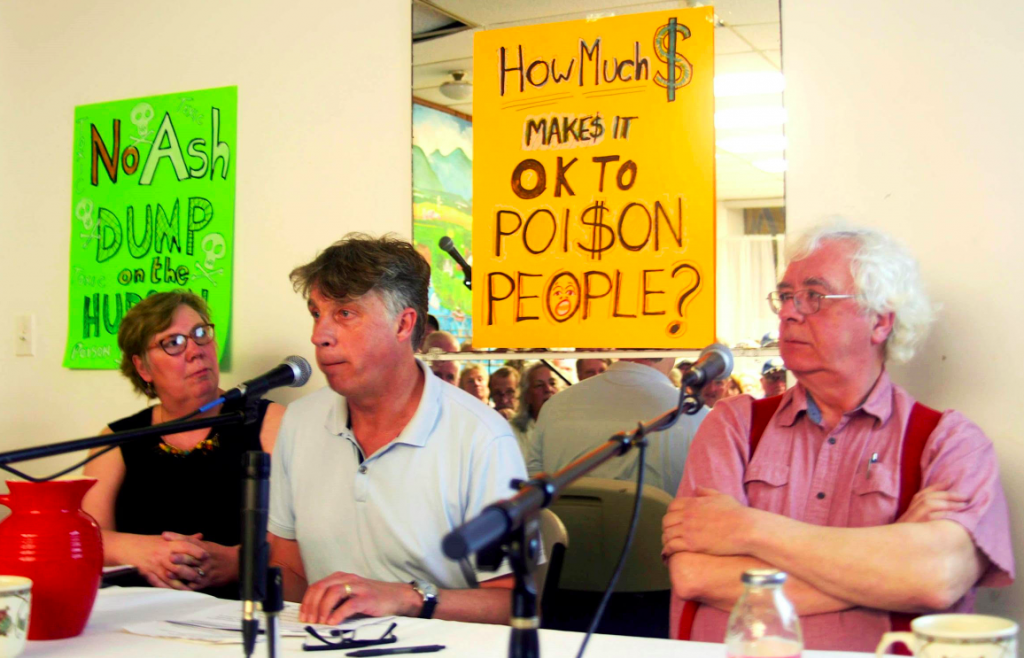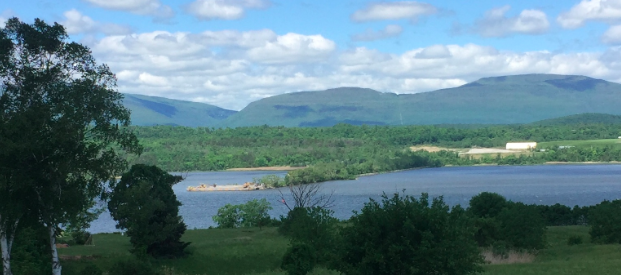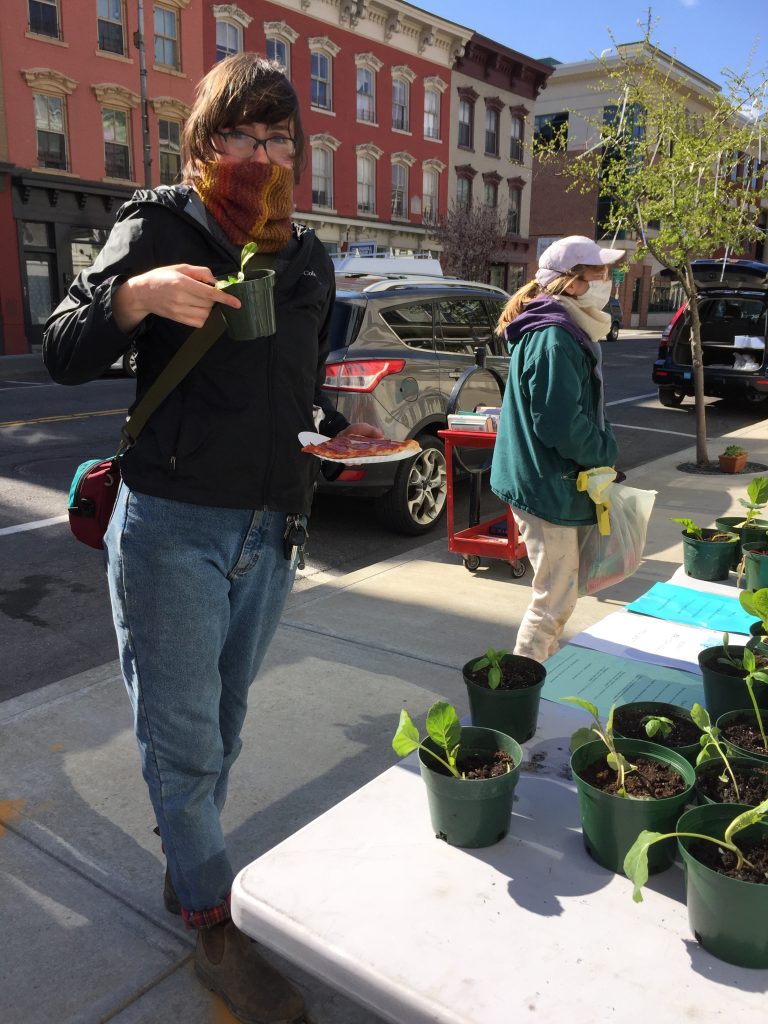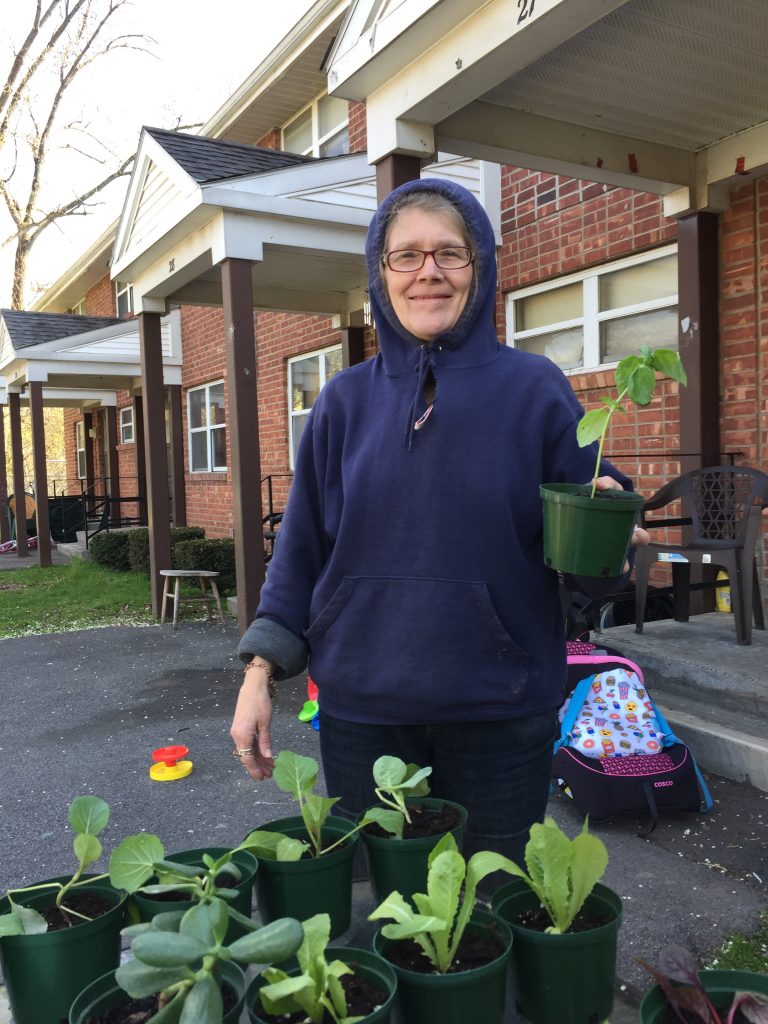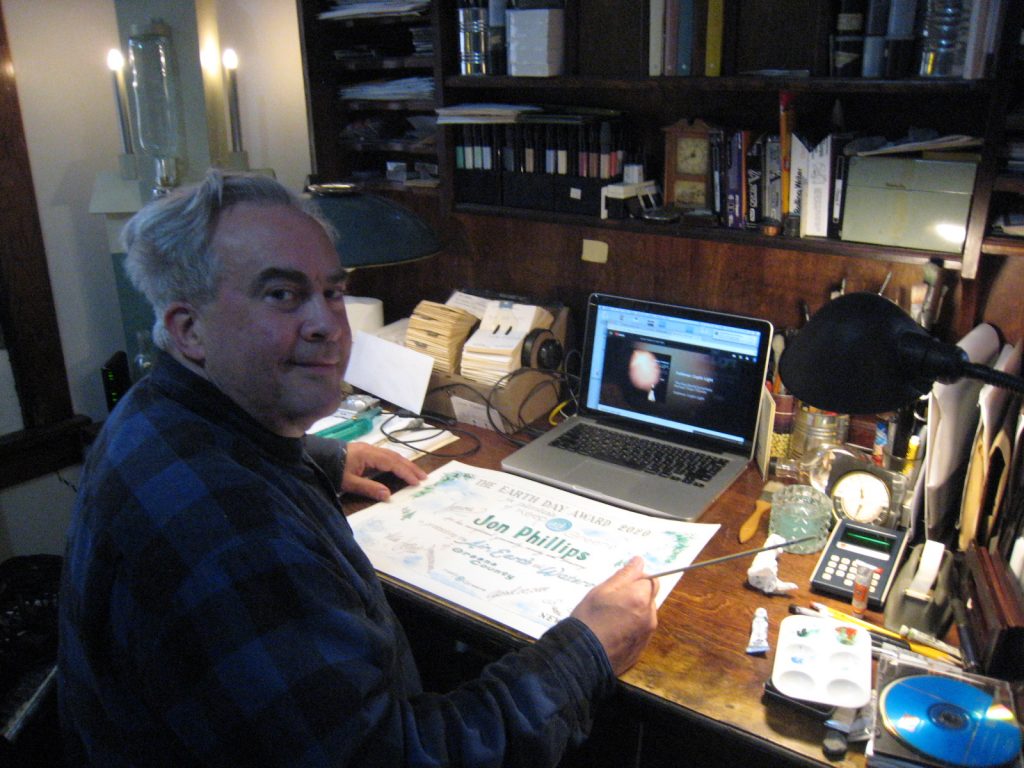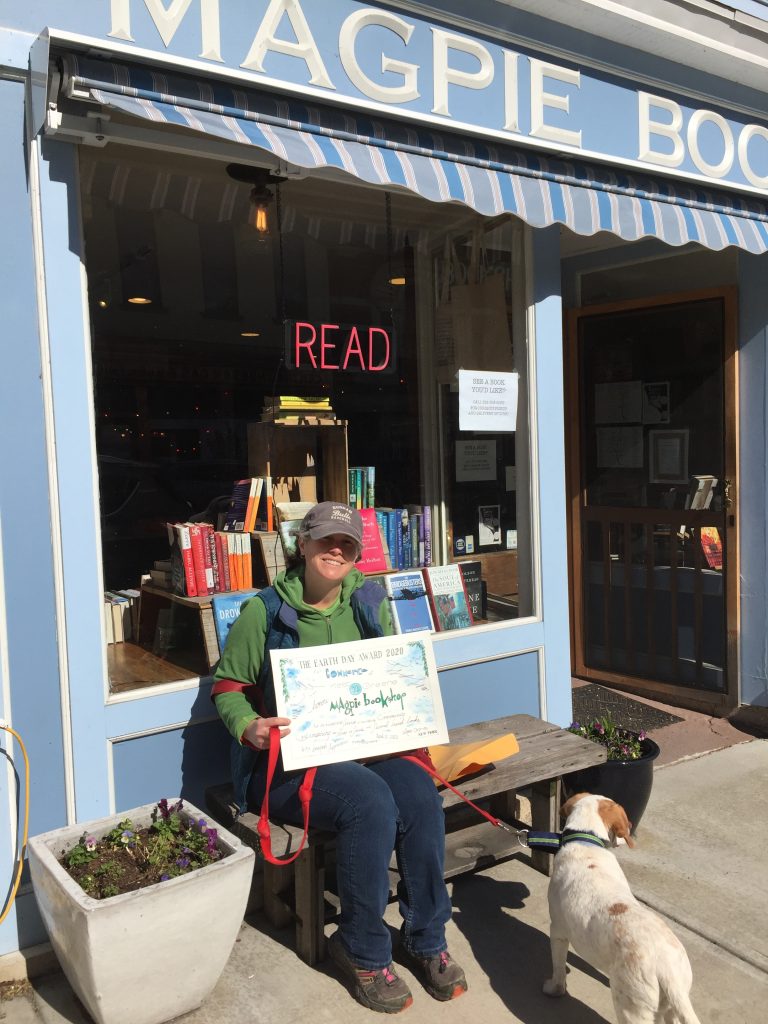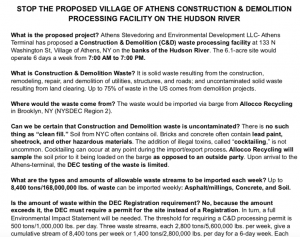Dave Walker PhD is a Geologist and Keep It Greene member.
The Lenape Native American name for the Hudson, Mahicantuck, means “river that flows two ways”. Why? The Hudson is a tidal estuary, so roughly twice a day it changes flow from north to south. The tides raised by the moon on the surface of the ocean cause a rising ocean to push water into the Hudson estuary and a falling ocean to drain the valley. Filling and draining the valley from and to the ocean causes the reversal of flow directions.
How do you tell which way is the ocean from Catskill? Standing at Catskill Point and watching the river slosh to Albany and then to Kingston a couple times a day is uninformative until you notice whether the river is rising or falling with the motion. Because the tide is rising as the river flows to Albany, and falling when it flows towards Kingston, the river valley fills from the south and drains to the south. Therefore the ocean source of the rising tide and the sink for the ebb tide is to the south beyond Kingston.
Where does the Hudson come from? Where does the Hudson go? The highest water source in the Hudson watershed is Lake Tear of the Clouds on Mt. Marcy in the Adirondacks. Hard core cartographers often count the start of the Hudson instead where it emerges from Henderson Lake at Tahawus in the Adirondacks. The Hudson enters the ocean out of New York harbor. It is tidal from Troy to the ocean.
Why is the ocean salty? How much of the Hudson is salty? The chemical weathering of continental rocks produces runoff water with dissolved solids. These solids flow to the ocean where they accumulate, making the ocean salty. The principal salts are NaCl, CaCO3, and MgSO4. Tidal flow of salty ocean water up the valley mixes with fresh water coming down the valley to form brackish (partly salty) water. During the late summer when fresh water flow is least, brackish water may be found as far north as Poughkeepsie. During spring foods, the fresh water may approach New York Harbor. On average the salt reaches to about Newburgh.
Why isn’t the ocean saltier? Is it saltier some places? On average the ocean is about 3.5% salt, and there is no reason it could not be saltier if more salt was added. It was once thought that the saltiness of the ocean would be a chronometer for the age of the Earth. If the addition rate of salt from rivers were known, then the time to reach 3.5% saltiness could be calculated. Early efforts produced ages much too young to explain all the other things the rocks tell us have happened. However if there is something removing salt from the ocean, the calculation in its simple form fails. It is hard to calculate the filling time of a leaky bucket. We know from the geological record, that the ocean sometimes deposits vast layers of salt as bedded layers on the sea bottom. Syracuse has mines for this salt deposited during the Silurian age more than 400 million years ago. Such deposits form when arms of the ocean under tropical sunshine become isolated. Water evaporation leads to salt precipitation as salt becomes locally concentrated by evaporation. Evaporation in the Mediterranean is faster than river input so that the salinity (salt content) is higher than average for the ocean. The Mediterranean gets topped up by seawater entering through the straights of Gibraltar to compensate for the net water loss to evaporation. Small bays off the Mediterranean in Spain are used to extract salt commercially by isolating them to the point where they dry and form salt crusts. This process, natural and/or encouraged by man, keeps the ocean salinity from rising too far, although it has shown some variation through time in the geological rock record.
What could make the river level rise? Besides short-term tidal mechanisms, the long-term river water level at Catskill could rise if either the land surface sank or the ocean level rose above the tidal average baseline. The Catskill area is currently tectonically fairly stable and significant subsidence is not expected soon. So sea level rise could either happen if the volume of the ocean basin shrinks or the volume of water in the ocean grows. The ocean basin volume could shrink by warpage of the ocean floor or by the eruption and accumulation of large volcanic rock deposits. But by far the largest and the quickest threat of ocean level rising is by adding more water from the reservoir that is locked up in the great polar continental ice sheets in Greenland and Antarctica. If the Earth becomes too warm, ice melting will add to the volume of water in the ocean. This has happened many times in the past.
If sea level rose 70 meters, would your house be flooded? 70 meters is a rough estimate of how much sea level would rise if the great polar ice sheets melted. Check a topographic contour map to see whether your house is above or below the 220 foot contour. The Court House and the Price Chopper would be underwater, whereas the hill west of Walmart and the Price Chopper would be an island.
Would the sea be saltier or fresher if that happened? Ice comes from snow which comes from evaporated water. The evaporation process leaves salt behind in the source water like the ocean. Releasing large amounts of fresh water during global warming will dilute the ocean with fresh melt water from glaciers and make the ocean less salty.
40 thousand years ago, Catskill was under a glacier. How far south did the glacier go? Clearly the climate has changed because the glacier has gone. The glacier, in flowing south, scraped the land surface beneath it clean and bulldozed debris ahead of it to form piles known as moraines. The southern terminus of the glacier is established when the melting rate balances the ice flow rate from the north and the moraines begin to accumulate. The piles are still clearly visible from the last glacial advance and form the hummocky chains of hills that stretch the length of Long Island. The rocks in those moraines have in some cases been brought this far south from points in Canada.
400 million years ago, Catskill was under tropical ocean reefs. What happened? Climate change is not just about ice ages. On long term geological time scales, the position of the continents relative to the poles of the earth can change as plate tectonic motions shuffle the continents over the Earth’s surface. Thus geographic changes also produce climate effects. The Catskill area has been tropical during the Paleozoic when warm shallow seas and limestone reefs like in the Bahamas today, were the setting for the deposition of the rocks of the Helderberg escarpment. This is the cliff-bounded terrane west and south of town where the cement quarries are located. These rocks testify to a previous era when the life forms recorded in the fossils and the climate as recorded in the rock types were very different from today with its geologically recent ice age.
Why is there more daylight in summer than winter? Earth’s rotation axis is tilted 23 degrees relative to the plane in which the Earth orbits the sun. This causes the season in which the northern hemisphere leans towards the sun (northern summer) to get more daylight than when the northern hemisphere tilts away from the sun (northern winter). In the southern hemisphere, for instance in South America, northern winter causes more light to reach the southern hemisphere. Thus northern and southern hemispheres have their seasons reversed. The summer/winter cycles can modulate biological growth by light and temperature variations.
400 million years ago there were 415 days in a year. How many hours in each day? The corals of the Devonian limestones west of town record growth rings analogous to tree rings. The corals deposit external skeletons as they grow, layer by layer, day by day, and year by year. If one counts the number of day layers in a yearly cycle of growth layers, one gets a big surprise. In the Devonian, the day count in each year was 415, not 365. This means the Earth turned faster on its axis during the past than today. It did 415 rotations for each lap the Earth takes around the sun in a year. That means there would be fewer hours in that Devonian day. To change 365 days of 24 hour duration into 415 days, the days have to be shorter, about 21 hours long in the Devonian.
Has the Earth’s rotation rate speeded up or slowed down since then? The Earth’s rotation rate has slowed, taking longer to do a single turn on its axis. If you want to have a 25 hour day to get done all the things you need to get done, a longer day is coming as the Earth continues to slow. But you will have to wait another 100 million years to get to the 25 hour day. It is a very slow gradual change.
Apollo 11 showed the moon is backing away from Earth at inches/year. Why? Back to the tides! The Apollo 11 reflector experiment placed mirrors on the moon. Bouncing a laser off the mirrors and timing the round trip for the pulse, gives a very accurate measure of the Earth-moon distance. The experiment has been followed for 50 years and the moon is found to be retreating from the Earth at 3.8 centimeters/year, roughly an inch and a half each year. Why? The moon raises the ocean tides which are physical bulges on the ocean’s surface along the straight line that connects the Earth and moon. But the Earth turns, and the bulges remain lunar-directed, except for the fact that the ocean bulge is being dragged over the topography of the ocean basins and continental shelves by the Earth’s rotation. This dragging is viscous (sticky). So the bulge gets pulled a little ahead of the Earth-moon line. The sloshing of the oceans along the topographic obstructions dissipates some of Earth’s rotational energy, causing it to slow its rotation. But some of the Earth’s rotational energy is also lost by the fact that the tidal bulge had been dragged ahead of the Earth-moon line and acts as a knob to which an imaginary gravitational elastic cord tugs at the moon and throws it into a higher orbit farther from Earth. So the gravitation effect of the bulge leading the parade is to accelerate the moon outward. Thus the energy to accelerate the moon is transferred from the Earth’s rotational energy and the Earth’s rotation slows as the moon backs off. Before the Apollo experiment, it was not known how much of the Earth’s slowing rotation was due to the viscous loss of tidal sloshing and how much was due to lunar acceleration to higher orbit. The Apollo laser ranging result established that both effects were significant and measurable, with the viscous losses to tidal dissipation being larger.
How deep a hole can you dig or drill or burn? Mines have been dug several thousand feet below the surface. The digging usually stops for one of several reasons. The ore being mined may run out. Or the rate of water flow into the mine from cracks in the surroundings may exceed the rate at which the mine can be drained. Or the rocks become too hot or vulnerable at depth to collapsing into the hole excavated by the mine. Holes in excess of 10 kilometers deep have been drilled, instead of mined, when the difficulties of water drainage and open access for ore removal are no longer issues. Such deep drill holes are for scientific or commercial exploration to find what is at depth. But their limit is usually the patience and resources available to drill such expensive holes. Drills bind up or get degraded by heat at depth. Technical problems usually make advancement of the hole an exercise in diminishing returns on investment. Presumable radiation-based probes like laser drilling could vaporize their way to further depth in very rapid fashion before a hole burned that way could close itself.
How do we know the center of the Earth is as hot as the sun’s surface? The surface of the sun is measured by radiation pyrometry to be about 5700 K. There is no optical path to the Earth’s core so its temperature must be taken indirectly. We know from seismology, that the shear waves generated by earth quakes are not transmitted through the core and therefore the core must be liquid. We know from the high density of the Earth, and the density increase with depth, that the core must be mostly iron. No other cosmically abundant element is heavy enough to account for the high density. So the temperature at the outer surface of the core must be hot enough to melt slightly impure iron. At the enormous pressure of the core, over a million times atmospheric pressure, the melting point of iron is about 5000-6000 K, the uncertainty being caused by how impure the iron is. Thus the minimum melting temperature of the core is close to that of the sun’s surface. There is an enormous reservoir of thermal energy within the Earth.
Why do crystals have flat faces? The internal atomic structure of crystals is symmetric and orderly. The flat faces on a crystal reflect that orderly internal atomic arrangement. As an analogy, consider a box of marbles that is not full. When you shake the marbles to settle into their most stable configuration, you will find the upper surface of the pile to form regular flat shapes. The same thing occurs in crystals but the atomic ‘marbles’ are microscopic, at fractions of a nanometer.
How do we know the universe is expanding? Cars on the highway coming at you and then going away from you when you stand beside the road, sound different when they approach and recede away from you. The bump-bump-bump of a tire irregularity or the whistle of an air stream change pitch as they go past you. They are high pitched approaching you and lower pitch receding from you. This is the Doppler shift where apparent frequency is changed with relative motion of the source of vibrations and the observer. Motion of source towards observer raises frequencies. Separation of source and observer lowers frequencies, or the pitch in the case of sound vibrations. A change in the vibrational frequency of light would result in a change of color in the light perceived by the observer. Astronomers observing stars can tell whether they approach or recede from Earth by looking at the frequency shift of starlight. Stars approaching us have their light frequency shifted to higher frequency, bluer light. Stars going away from us have their light shifter to lower, redder frequencies. A quite surprising observation is that distant stars are all going away from us. Only some of our near neighbor stars are approaching us. An even more surprising observation is that the farther away from us a star is found to be, the faster it is receding from us. The red shifts of star light become more extreme, the farther away from us that they are. The only explanation that makes sense of these observations is that the visible universe is expanding. We are in some enormous cosmic balloon which is inflating and expanding. This was deduced by Edwin Hubble who established the relation between the bigger red shift at the bigger distances. The proportion is given by Hubble’s constant.
How long have we been here? The rate of expansion can be used to project backwards in time. Because we can work out how quickly distant stars are moving away from us, we have some idea how long it took to get that far away. It some point at the very start of the expansion all the stars would have been together. That rather frightening concept is essentially the beginning of the universe. Suddenly –BANG– there was a bunch of stuff in the center of the universe rushing away from itself in all directions. This process continues. Echoes of that big bang are still ringing through the universe in the form of a uniform glow of microwave radiation of about 3 centimeter wavelength. Using Hubble’s constant we can get the time to the start of the universe to be about 13-14 billion years ago.
Is there life elsewhere? We do not really know, but we can make a statistical argument that it is probable. There are an awful lot of stars out there, a conservative estimate might be something like 1,000,000,000,000,000,000,000,000. If only one in a trillion has the right sort of planet in the right sort of solar system, there are still a lot of chances to hit the jackpot. And we know it happened at least once so there is nothing impossible about life! It just might not look like us…..
Happy Earth Day 50
